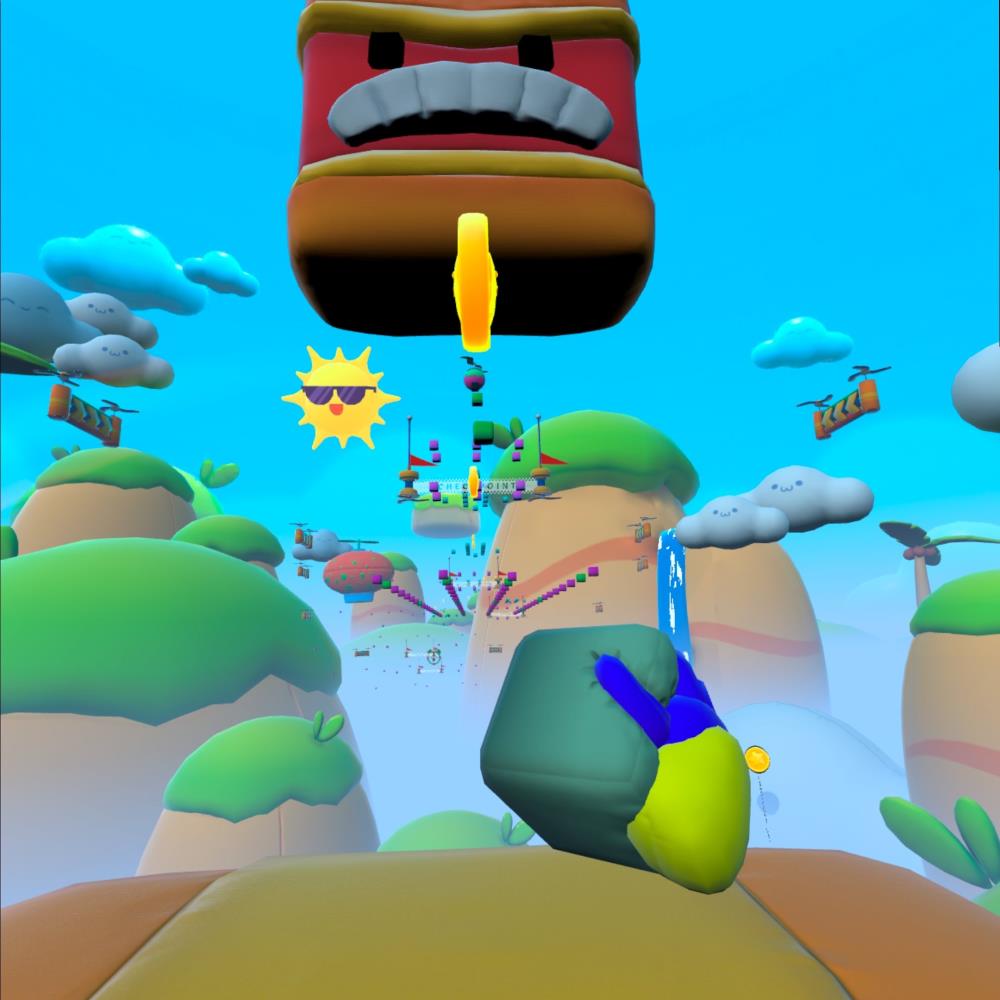
In the last few days we have seen blogs being written in regards to hallow ground of many gamers, Frames Per Second, and whilst those entries have tended towards the technological aspect I have decided to throw a massive spanner in the works by introducing the complex subject of Biology that may shatter the dreams of many, or bring relief to others.
To cut a long story short, in future console generations we should never see the FPS debate being relevant. 100 Frames Per Second should be maximum available for the most part and this will not be a limitation based on the hardware inside the gaming machines of the future, the roadblock to ever smoother visuals on the TV screen is actually you.
100Hz. This is a magic number in this blog as well the Human Visual System as a whole as 100Hz is the limits of what we can perceive under the circumstances outlined further down, most of you will have guessed by now that in this particular sense Hz relates to FPS. Do not confuse it with the more traditional idea that Hz is equal the amount of times a TV Screen turns off and on because that is not how the human body works.
The concept is simple. Light enters your eyes, this is changed to electrical and chemical information, that information is passed to your brain where it is translated into the images you see to understand the visual world around you. The reality is so far more complex that by the end of this blog you will understand why 100Hz is the magic number because we are physically incapable of producing anything better at the speeds we wish to see our games.
So, light is entering our eyes as a constant stream of photon 'waves' (visual spectrum frequencies) which never turns on or off and has no FPS to measure. It just constantly streams in with no breaks or flickers. These waves of light pass over structures known as Cones and Rods, the Cones detect the 'wavelength' of the photons and the Rods detect the 'intensity' of those photons. Both the wavelength and intensity are translated in to electrical and chemical properties and pushed deep into our skull towards the 'Visual Cortex'. A whole manner of wild shizzle happens where billions upon billions of neurons in our brains start to decipher what all this chemical and electrical garbage actually means. The wavelengths detected by the Cones are assigned colours, the intensity measured by the Rods translated into a level of brightness. At any one moment, an image is born inside inside our head. A visual snapshot in a point of time if you wish to think of it like that.
There is a lot of work going on to do this and the vast majority of images created from this information is ignored before you even notice it. Between the Rods and Cones and the Visual Cortex that never flickering stream of information has been chopped up into frames, this is the useful information that we can use to produce a seemingly smooth motion of vision. Electrical signals are sent as pulses. Approximately 3000 per second at this stage. The brain is receiving these 3000ish pulses and gets to work but it is still overcrowded with information it cannot work in in real time, to produce images that we can use fluidly it has to quickly analyse each pulse and automatically ignore most of them. In broad daylight and under the right speed conditions we get our magic number... 100Hz. This is the best, smoothest set of sequential images our brain can manage, atleast for 99.999% of the people on this planet.
The right speed I talked about just above is actually pretty slow, at noon with sun high overhead you take your hand and hold it about a foot in front of you, then allow it five seconds to pass from the left to right. Five seconds. Your tracking an object no more the 2mph in front of you and that gives you the very best fluidity of a clear image that we can muster on a biological scale. If your hand moves faster then the image quality drops because the brain introduces blur, it effectively disregards details to maintain your 100FPS human eye vision. That is the nightmare scenario for some gamers but it is important because you still perceive it to be your hand, you haven't extract lost content of the image so no big deal really. Speed up your hand and see how quickly that image becomes a mess though, soon you will have difficulty making out the ridges on your knuckles and eventually you will lose almost all fidelity of your finger nails.
That is in broad daylight, the best possible environment for your eyes and brains to work. It's a whole different matter in darker light because then your brain is having to work so much harder to pick out detail, in fact tests have shown that under the light given off by a single 60w incandescent light bulb (the older inefficient ones now banned in the UK) the human brain will start to ignore more information to produce a better quality image. The Hz factor is reduced to a measly 40 Frames Per Second.
We have other blogs talking about people not being impressed with 60FPS, yet at night we could not even perceive that. Why then do people say they notice it? Strangely enough it is because the opposite of what you would expect as your brain is still working to cancel out images coming from the television screen. Amazing to know that if a television pumped out images at 40 Frames Per Second at night under that 60w of light then our brains automatically choose not to spend so much of it's time filtering out what it decides as not necessary, you are working in 40 Frames Per Second mode and receiving 40 Frames Per Second from the centre of you vision. You brain can interpret that easily.
Tests in laboratories involving simple click tests (subjects see a a dot appear briefly and click the mouse) showed they in broadday light they were faster when working on a 100Hz TV, but they responded slower on that same TV in the darker environment. At night they were fastest on the 40Hz television. So what happened?
This dot appeared for just one frame in the second, the rest of the frames were blank. At night and on the 40Hz TV they saw every frame as none had to be discarded and thus they reacted to it as soon as the dot appeared, allowing of course for reaction time to press the mouse button. On the 100Hz screen however roughly 2.5 frames to every one was ignored by the brain, they often missed the dot appearing. Contradictory in a way that didn't mean they didn't click the button, through a bit of trickery of our brain they did react to it even though they never saw it because the brain somehow still detected a change in the information passed from the eyes, but this required additional processing beyond out visual system and the mouse click was slightly delayed.
What this means is that when the Playstation 6 or XboxThree comes out, we may not see any game running over 100FPS if the developers are smart and honest with it's customers. You'd have to be playing out in your garden to truly appreciate it and even then their would not be much action going on at that moment. Inside however we will never appreciate the 100FPS because our biological make up does not allow it. We may get a placebo effect that it is smoother but it certainly will not make you a better player because of the perceived smoother frame rate. The ultimate gaming machine needs a combination of the console/computer and the television working in tandem to detect the conditions of the environment you are playing in, as well as the intensity of the action going on in the game and then adjusts the Framerate accordingly.
Sometimes less is better and if developers allowed our brains to rest a little easier at night, we'd all be better gamers. For our brains the FPS is actually Hz, images translated per second and the golden number is 100. Don't let any publisher or manufacturer dupe you with future claims of 200FPS... TV manufacturers are already doing that and there are already N4G members saying on the other FPS blogs how they doubt people seeing the benefit of it.
**I am aware of reports of Formula One drivers experiencing slow-motion vision when conducting overtaking or evasive actions, they are shown to experience upto 300Hz vision but this is short duration only and as stated earlier, 99.999% of people on this planet cannot do it. Developers are better off directing computational resources to making more believable worlds for the 99.999% than for dedication the same overhead resources towards 300FPS for the 0.001%.

Duuro says: "I think the idea behind the movement is cool, but on the other hand, the execution and clear limitation of the platform somewhat undermine the whole thing."
"The Wakefield-based (the UK) indie games publisher and developer Team 17 and indie games developer Ernestas Norvaišas, are today very proud and excited to announce that the full version (v1.0) of their train-led city builder “Sweet Transit”, is now available for PC via Steam and EGS." - Jonas Ek, TGG.

Review - If you are a fan of intrigue in your stories then The Mildew Children on Xbox will be well up your street.
This is an interesting take on the FPS topic. I agree that frame-rates above 100 are a bit on the excessive side.
However, I would like to point out that there is a non-biological side to the FPS issue, in the hopes that people don't get the idea that something like 40fps is the way to go.
(I could be wrong on some of this stuff, so someone please do correct me where I'm wrong.
Consider a racing game running at 30fps.
This would typically mean that every 30 seconds, the game engine calculates the motion of the car. The car's motion only exists across discrete steps, with each step occurring roughly once per 0.03 second.
This would also mean that all of the player's input within that 0.03 second time gap gets applied as a single input to the game's physics engine.
The frame-rate is placing a limit on how finely the player can interact with the game world.
In competitive games, this places a limit on skill as well, because one player might have faster reflexes, but it won't make a difference unless the difference is larger than the time gap imposed by the frame-rate.
Being able to actually see the feedback on the screen isn't always necessary either.
Suppose I'm playing a shooter, and I move my crosshair to a target. If I feel that I have pressed the analog too far, I can quickly correct it. This all happens in my mind, I don't have to see my action on screen, but the game will only be able to pick up my correction if the frame-rate is high enough to accurately read all of the inputs.
With all this in mind, I would say there is some benefit to having a game running above 100fps if the physics and interactivity of the game is linked with the frame-rate. However, for consoles, I think that after 60fps, the hardware is better spent on other areas.
This blog is very well written and thorough and essentially says "under certain conditions, this is what you can see and what you will notice."
Yep.
Anyway, great blog.
Great read and interesting take on the capabilities and lack there of with the human visual cortex in certain conditions. Have to say though, consoles should never exceed 60fps as it isn't really necessary; resources can be spent on far more important aspects of the game than adding even more visual fidelity.
Fascinating post with a lot of well conveyed information. Made me start thinking of ocular shortcomings in other areas beyond gaming.